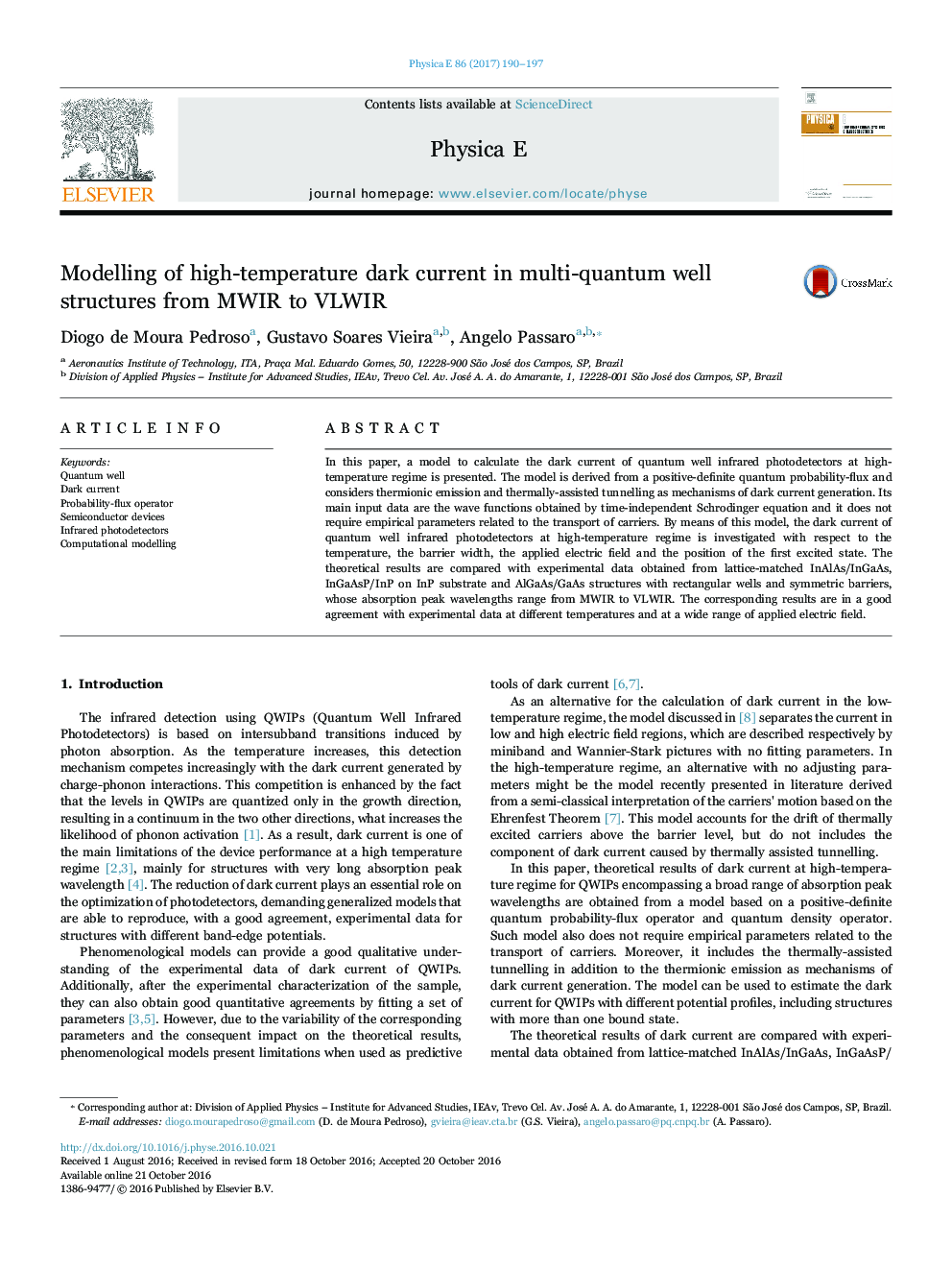| Article ID | Journal | Published Year | Pages | File Type |
|---|---|---|---|---|
| 5450264 | Physica E: Low-dimensional Systems and Nanostructures | 2017 | 8 Pages |
Abstract
In this paper, a model to calculate the dark current of quantum well infrared photodetectors at high-temperature regime is presented. The model is derived from a positive-definite quantum probability-flux and considers thermionic emission and thermally-assisted tunnelling as mechanisms of dark current generation. Its main input data are the wave functions obtained by time-independent Schrodinger equation and it does not require empirical parameters related to the transport of carriers. By means of this model, the dark current of quantum well infrared photodetectors at high-temperature regime is investigated with respect to the temperature, the barrier width, the applied electric field and the position of the first excited state. The theoretical results are compared with experimental data obtained from lattice-matched InAlAs/InGaAs, InGaAsP/InP on InP substrate and AlGaAs/GaAs structures with rectangular wells and symmetric barriers, whose absorption peak wavelengths range from MWIR to VLWIR. The corresponding results are in a good agreement with experimental data at different temperatures and at a wide range of applied electric field.
Keywords
Related Topics
Physical Sciences and Engineering
Materials Science
Electronic, Optical and Magnetic Materials
Authors
Diogo de Moura Pedroso, Gustavo Soares Vieira, Angelo Passaro,
